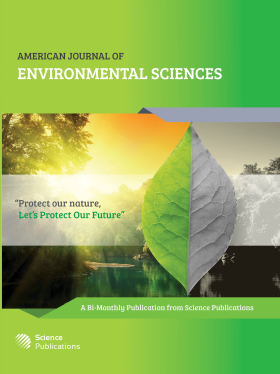Suitability Evaluation of Groundwater for Irrigation, Drinking and Industrial Purposes
Abstract
Problem statement: Groundwater is an important source of freshwater for agricultural, drinking and domestic uses in many regions of the world including Bangladesh. Demand of groundwater has been increasing day by day for irrigation by bringing more area under cultivation. As a drinking water the bottled water market currently has an average annual growth rate of 7.4% between 2002 and 2007, which is parallel to the growth of this industry all over the world. Obviously, the feed water should be free of particles and colloidal material and as low as possible in soluble organic matter. Series of water quality problems have been identified and addressed since the 1950s. These include point and non-point source pollutants such as nutrients, hydrocarbons, pesticides and heavy metals. In this regard, some studies to assessment the quality of water had been conducted in world wide. Where as, a Chiribandar a selected southern part of Bangladesh has great importance in agriculture and industrial perspective, no study has been done yet to asses the ground water quality for agricultural, drinking and industrial uses. Approach: A research was conducted to assess the degree of ionic toxicity of groundwater sources as irrigation, drinking and industrial purposes. Twenty eight groundwater samples were analyzed for different elements of dominant cations and anions such as Ca, Mg, Na, K, Fe, HCO3 and other minor ions P, B, As, N03-N, S04-S and Cl. In addition, to classify water quality as excellent, good suitable, Sodium Adsorption Ratio (SAR), Soluble Sodium Percentage (SSP) and Residual Sodium Carbonate (RSC) were calculated following standard equations. The quality of water is generally judged by its total salts concentrations, relative proportion of cations or Sodium Absorption Ratio (SAR) and the contents of HCO3. Results: According to the concentration of cation and anion constitutes of groundwater, water quality of study area were suitable for irrigation, drinking and industrial purposes. Except for a few cases there was neither chloride toxicity nor sulphate acidity in the area. The content for NO-3 and P was negligible and water samples were 'good' to 'excellent' with respect to boron and SSP. Range of EC (361-802 μS cm-1) and that of SAR (0.23-0.54) indicated that all samples were in 'medium-salinity low-alkali' hazard class. In respect of TDS and RSC values, all samples were of fresh water and suitable class. Among SSP and SAR, TDS and EC were highly correlated. An Arsanic range was far below than recommended upper limit. Conclusion/Recommendations: In respect of all evaluating criteria, groundwater of all the 28 locations can be safely used for long-term irrigation and drinking purposes. All samples were found suitable for drinking and industrial purpose in consideration of Fe concentration. However, none of the water samples was suitable for industrial use, because of higher TDS and pH values exceeding recommendation.
DOI: https://doi.org/10.3844/ajessp.2009.413.419

- 6,464 Views
- 6,231 Downloads
- 30 Citations
Download
Keywords
- Groundwater
- toxicity
- irrigation
- water quality
